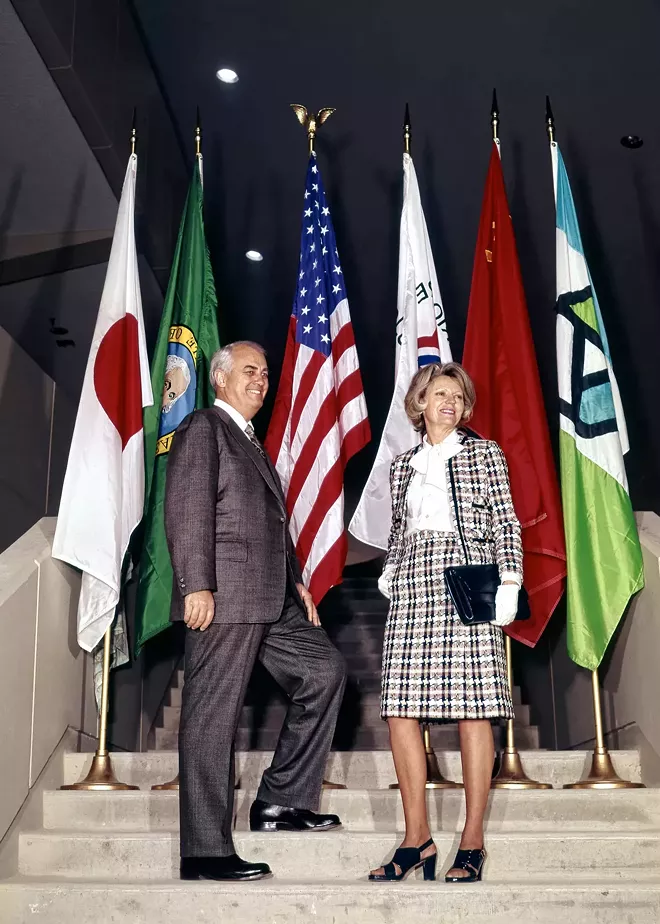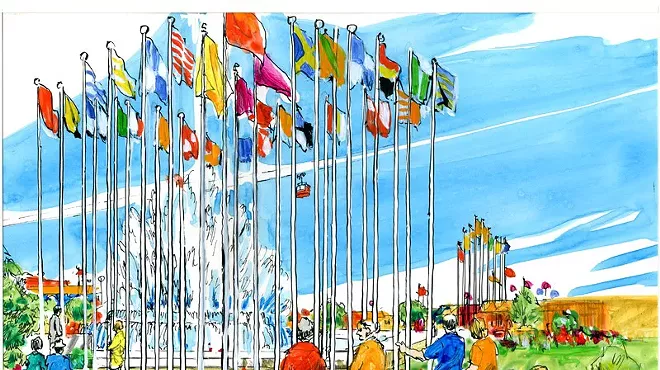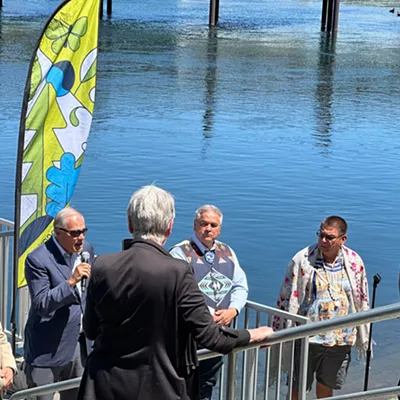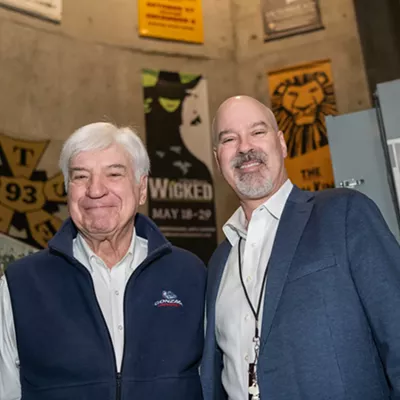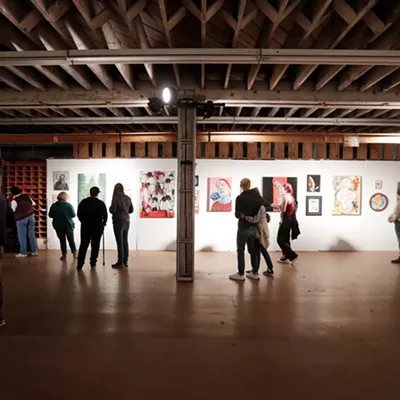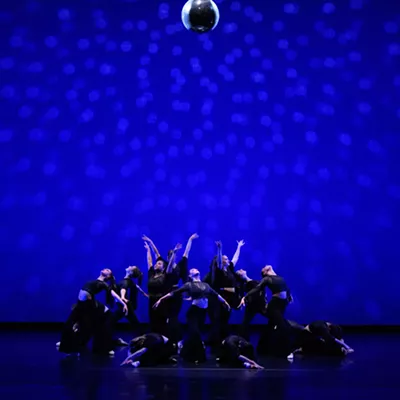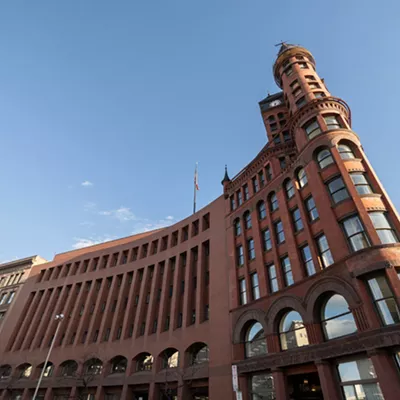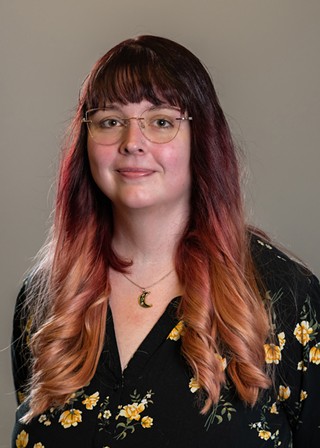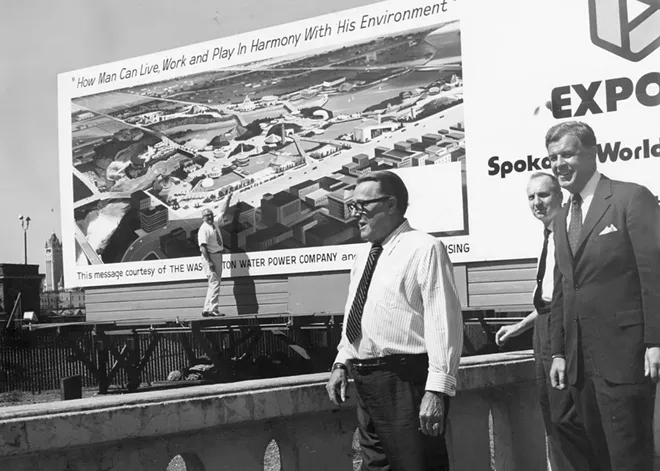
Those who've heard of King Cole likely know that he and his family moved to Spokane in the mid-1960s to help with business-led efforts to reinvigorate the city's downtown. Cole, after all, was an urban planner who'd worked to revitalize the waterfront in San Leandro near Oakland in the Bay Area, and the business community in Spokane wanted his expertise to help fix up Spokane's own riverfront.
Cole was brought on board after Spokane voters rejected two bond pitches in 1962 that would have built a new City Hall and paid for upgrades in downtown's polluted and run-down industrial areas. Later on, he was key in suggesting the city host a World's Fair Exposition.
Cole knew that Seattle's 1962 World's Fair had brought futuristic buildings (such as the Space Needle), new ideas and plenty of investment into the largest city in the state. He dared to believe that Spokane, which was coming up on its centennial and only had about 180,000 residents at the time, could pull off something similar.
But interestingly, those planning years weren't when Cole first fell in love with Spokane.
In the early 1940s, during World War II, Cole was trained at the Farragut Naval Training Station — now Farragut State Park — on Lake Pend Oreille. While on leave, he went to a USO dance in Spokane and met a girl who took him on the trolley up to her parents' home on the South Hill, says Nancy Cole, one of Cole's eight children.
"It was snowing by Manito Park, and he thought, 'This is the most beautiful place I've ever seen, I'm going to come back and live here,'" Nancy says.
She notes that, luckily for her and her siblings, things didn't work out with that girl, and their dad later met their mom, Jan, who became his biggest supporter.
Mary Cole, another of the Cole daughters who still lives in Spokane, says that while her dad was traveling to pitch urban renewal ideas and ensure Spokane could host Expo '74, Jan held things together, raising the kids and helping him stay organized, even when he was on the other side of the world.
"She kept him going," Mary says. "He couldn't find anything. He'd be in Europe and he'd call my mom and say, 'Jan, where did you put my such-and-such?'"
Nancy agrees, noting that while their dad was an extrovert, traveling for weeks at a time to promote Spokane and the fair, their mom was an introvert. She didn't like to dance in front of other people, but that didn't stop her from hosting many lively dinner parties once Expo was underway.
"What I saw her do was connect people," Nancy says. "She'd always go for the person who had no one talking to them, find out something about them, and connect them with somebody else."
One of the parties that Mary remembers best was during opening weekend, after a symphony performance conducted by Zubin Mehta of the Los Angeles Philharmonic orchestra. Among the entourage that ended up at the Cole family home for a "midnight breakfast" were Mehta and actor Danny Kaye, who'd starred in White Christmas alongside the Spokane-raised Bing Crosby.
Six of the Cole children were still at home by the time of the fair, including Mary, who was 20 years old. She was shy, like their mom, and as the kids were introduced one after the other, she says she was nervous to meet Kaye. But when she told him her name was "just Mary," the handsome actor replied, "Mary, a common name for an uncommon girl."
Photos from that night were featured in the 12th-ever issue of People magazine, which had just launched in March 1974. In the May 20 edition, the magazine included a spread titled "King Cole is a Tenacious Soul."
The article described Cole as an "indefatigable optimist" and noted that he "lives up to the nursery rhyme," though "being a merry soul wasn't... enough to get the fair underway." That took determination and "four rough years" of planning.
THE FALLS AT THE HEART OF IT ALL
As local historian Bill Youngs would later write in The Fair and the Falls, Cole knew that Spokane Falls was one of the city's most undercelebrated assets, and something that could bring people back to engage with the city's core. Youngs interviewed Cole on numerous occasions in the early 1990s while working on the book.
Getting people to the core would require removing old railroad infrastructure, industrial sites and more. Youngs writes that the city started working with the railroads and other property owners to condemn or buy the land along the river in 1969 and 1970.
At the same time, Cole knew it would also take more than just some cleanup to revitalize the city. He pitched building a National Monument near the falls, but that plan didn't get enough support when Cole and city leaders visited the other Washington.
But they did win some influence with some of the supporters who would be key to bringing together the fair, including U.S. Rep. Tom Foley, who later became speaker of the House, and Sen. Warren Magnuson.
Cole and business leaders figured a fair in 1974, while ambitious, could also mark the city's 100th birthday.
Cole traveled to France repeatedly to ensure that the international committee would approve the fair in Spokane, and elsewhere to get other countries on board.
Nancy and Mary say their dad was a polyglot — in addition to English he spoke Italian, French, Spanish, Latin and a little bit of Russian. As a devout Catholic, he'd studied to become a priest in his late teen years, which the women say likely helped with his skills in the Romantic languages.
At one point in the early '70s, before the fair, he and Jan were invited to visit the Shah and queen of Iran, Mary says. Iran was one of many countries to participate in Expo, during a time when the U.S. was closely allied with the monarch. (The Iran hostage situation wouldn't happen until 1979.)
One of the things that stood out about Cole's personality was his ability to keep track of the names on a seemingly endless list of people who worked to pull Expo together. Not only could he remember the name of every single person he saw working at the fair, but he could ask specific questions about their wives and kids, Mary says.
"He would treat the maintenance worker like he would a celebrity," she says. "He was gregarious, thoughtful and had a lot of passion and perseverance."
LASTING LEGACY
When the time finally came for the first day of the fair, which hosted events from May to November, the 52-year-old Cole was like a giddy little kid, Mary says.
"He got about four hours of sleep, we all did," she says. "That morning of the opening it was just gorgeous, beautiful."
While organizers hoped they'd simply break even by the time the fair opened, it was ultimately wildly successful, with more than 5 million visitors making their way to Spokane.
Though Cole was something of a local celebrity during that time and spoke often at events throughout the fair — something Nancy says she got to admire on many occasions as a Lilac Princess that year — he never wanted to take quick credit for all the work that was done, Mary says.
"He was very, very adamant that others were part of it as well," she says. "He didn't want to be the main guy, but he had to be."
It was a magical time to be a part of all of that, Mary adds: "You just don't know what an impact it would make until you look at things after the fact."
Cole was a naturalist, and spiritual, and he was interested in making sure his children and grandchildren could live in a world free from a lot of the toxic things that were out there, Mary says. Not only did the preparation for the fair transform the area around those beautiful falls and along the Spokane River, but it left Riverfront Park as a clean and striking way to interact with the heart of the city.
While Jan died in 2017, King passed in 2010. At King Cole's funeral, one speaker drew a comparison to It's a Wonderful Life, asking, "What would Spokane be like if King wasn't here?"
"That kind of blew us all away," Mary says. "That's what everybody wants. They want to be able to leave this world and have some sort of a lasting legacy. ... [My dad] had the smarts, he just knew what to do, and how to get it done, and wouldn't take no for an answer." ♦

